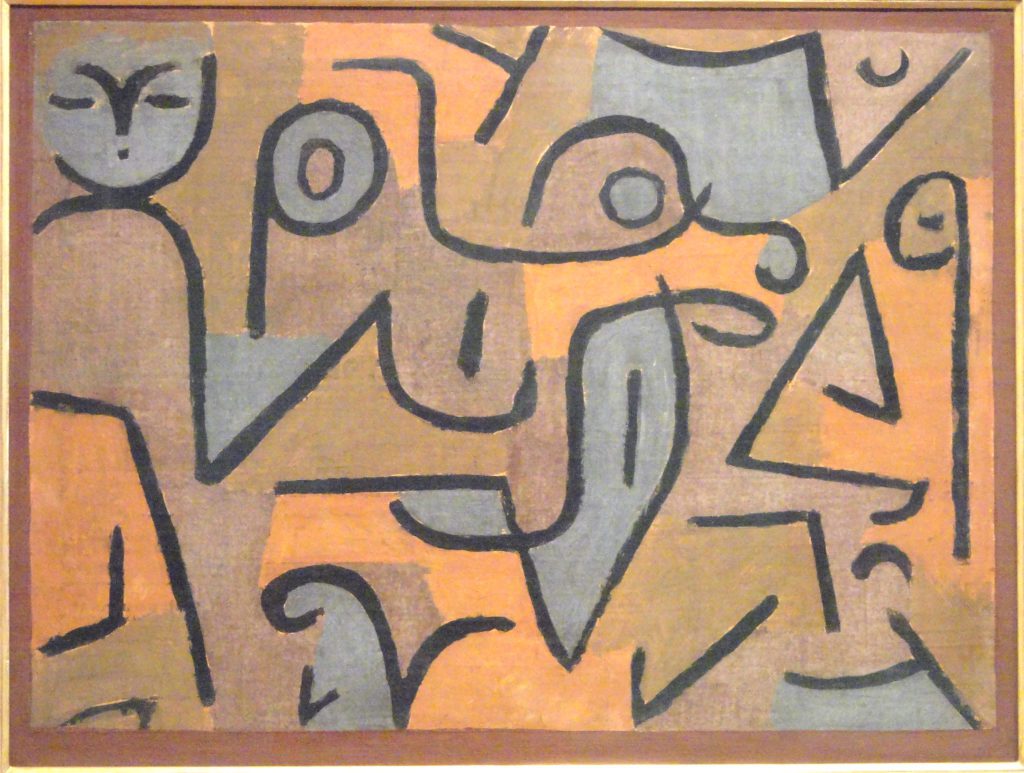At the Phillips: ‘Ten Americans: After Paul Klee’
By • February 7, 2018 0 1549

Paul Klee was one of those rare artistic innovators whose influence, like an undercurrent, can be difficult to gauge from the surface but should not be underestimated.
Born in Switzerland in 1879, Klee’s work from throughout the 1930s foretold a number of artistic trends that would galvanize the American art scene two decades later, ushering in the Abstract Expressionist era that radically altered the fine art landscape. From Mark Rothko to Saul Steinberg, Klee had a profound influence on a diverse set of America’s greatest midcentury artistic minds. However, his influence — unlike that of other avant-garde trailblazers like Picasso, Kandinsky and Miró — is often forgotten.
“Ten Americans: After Paul Klee,” at the Phillips Collection through May 6, orients Klee within the epicenter of this history for audiences who might well be unfamiliar with the artist’s legacy. The exhibition features Klee’s work in dialogue with William Baziotes, Gene Davis, Adolph Gottlieb, Norman Lewis, Robert Motherwell, Kenneth Noland, Theodoros Stamos, Mark Tobey, Bradley Walker Tomlin and Jackson Pollock — all midcentury American artists who drew upon Klee’s art and ideology in various ways.
With more than 60 works from collections in the United States and Klee’s native Switzerland, the exhibition sheds new light on these important figures in Abstract Expressionist and Color Field painting, and on the general exchange between America and Europe in the decades after World War II. It is a deeply enjoyable, fulfilling exhibition, and a well-deserved moment of recognition for one of the most original painters of the 20th century.
At first glance, Klee’s work might not seem categorically distinguishable from the tenets of Surrealism or Cubism, both European art movements from Klee’s time and place that had obvious, prominent and lasting influence on Western art. As with Surrealism, Klee drew upon the power of symbolic language, Jungian methods of working from the unconscious and an interest in probing nature’s invisible forces. Like Cubism, he drew inspiration freely from the art of indigenous African and Asian cultures and fostered an aesthetically progressive, unorthodox synthesis of line and color to create a bold new look about his art.
The distinction seems to be just how unique, diverse, whimsical and captivating Klee’s work is. As progressive abstraction goes, his drawings and paintings are brilliantly understated, naturalistic and exploratory, profound with but the lightest touch. It is the kind of work that inevitably causes one to bestow such unfortunate commendations upon its maker as “an artist’s artist.”
Klee was also an inspirational teacher at the experimental Bauhaus School and the Düsseldorf Academy of Art, writing and lecturing extensively on modern art. But, in 1933, the Nazis purged his work — along with other work deemed “degenerate” — from Germany’s state-owned museums. Many of Klee’s artistic compatriots fled Europe for New York, but Klee returned to Bern, Switzerland, where he remained until his death from illness in 1940. It was in Bern that Klee created the prolific body of mature work for which he is known today.
Although Klee never traveled to the United States, his works crossed the Atlantic in great numbers and were quickly embraced by a group of emerging American abstract painters. In Klee, they found a liberating example of an artist who drew upon a number of styles and ideas gaining currency in the international avant-garde. Particularly influential were his facility with hieroglyphic-like symbols as a language bridging visual and historical concepts and his almost architectural exploration of the unconscious mind.
Of the “Ten Americans,” Gottlieb and Tomlin are probably the most synonymous with the use of archaic signs and symbols that float within fields of color. They assimilated Klee’s practice of free association to generate a personal idiom of signs with unfixed, often mysterious meaning.
One artist that could be easily overlooked in this conversation is Jackson Pollock. But to see his inkbrush sketchbook doodles, as well as his etchings and drypoints, is to connect with almost a new artist altogether, whose mischievous, arcane and vaguely sexual hieroglyphics are almost Calder-like — although it’s impossible to mistake Pollock’s raw, mark-making energy.
The runaway star of the show might be Mark Tobey, whose all-over visual rhythms mirror Islamic geometric patterns — designed to extend indefinitely and suggest infinity — and the polyphonic effect of music, with multiple voices playing out simultaneously inside a single composition. Tobey’s lines and color work together in meticulous, meditative syncopation, much like Klee and his fellow Bauhaus instructor Wassily Kandinsky, who championed the rich parallels between the spheres of art and music. In works of the 1950s like “Forest Cathedral” and “Suburbia,” there is also a sense that the paintings were completely born of Tobey’s subconscious, reminiscent of Willem de Kooning’s 1950 masterpiece, “Excavation.”
The freedom of Paul Klee’s non-didactic, stylistically open-ended work — whether abstract or figurative, transcendent or banal in subject — provided an inspiring example that helped stimulate new directions in postwar American art. What is incredible is that Klee’s work feels like a peculiarly American language. I only say this because it reminds me of so much American art I have seen — thus proving the point of this exhibition. Influence is a funny thing.

